|
re Ah. I mean, OOF. This satire might actually be as clever as it purports to be. At the very least, it cuts through the modern state of affairs in the US like hot knife through butter. Mind you, the sociopolitics of the last few/several years are the proverbial low hanging fruit, ripe for being satirized, but nevertheless kudos to the author for doing it so well.
With a multimedia compendium structure of WWZ, though interviews, tweets, blogs, etc. OOF tells a story of one author’s descent into infamy which provides a catalyst for the country’s descent into abyss of its own making. To think, it all begins with a book. Not an especially well written book, even, but a politically charged one. And before it even sees the light of day, it’s not merely ripped to shreds, but those shreds get embroidered into the very fabric of the social media obsessed, paranoid, conspiracy mad culture, serving every ugly bias, every crazy notion, every lamentable discourse. The ensuing circus is determined to destroy the book, the author and those around him, ugly ignorant people doing ugly ignorant things to each other in the name of their own ugly ignorant version of truth and justice. The distinctly American way. OOF is almost too good for its own good. It’s a satire that’s too close to reality. Wildly messed up and yet disturbingly plausible. It makes for a somewhat uneasy read. Fun, but uneasy. It’s an ode to the age of misinformation, spectacularly unbreachable ideological division and pervasive toxicity of social media. The metafiction approach only maximizes the effect. The culture we live in absolutely deserves to have the strobelight exposure. Just slap a seizure warning on it and dare people to read it. A very interesting very timely read. Recommended. Thanks Netgalley.
0 Comments
I’m not a huge fan of memoirs, graphic or otherwise, but love, love armchair traveling. And this story was the kind of memoir that takes you places, specifically to Algeria. You get to follow the author along on her journey of figuring out where she comes from, where her family comes from.
Where her family comes from are the mountains of Algeria, where they lived as The Black Foot or Pied Noir, the settlers of French Algeria who fled the country following the war of independence. The author has her family’s recollections and some photos, but it doesn’t seem enough, so she goes for the firsthand experience to see if she can reconcile the nostalgia tinted pastoral beauty of the land with the sociopolitical crises that followed. It ends up something of a mixed experience. The land is lovely, the people are welcoming, but there’s definitely a very different quality of life than the one the author grew up with, different mentality, different mores, etc. And then, the main thing, of course, is reconciling the colonial politics of it all, for a descendant of the oppressors, if only technically. Definitely a lot of food for thought there. It all makes for a compelling and interesting read. And then there’s the art. Normally I prefer color, but this book works exceptionally well in black and white. Really lovely art with excellent character drawing, expressive faces and all. Not at all cartoonish like so many memoirs out there. Overall, very good, both contextually and visually. Well worth a read. Recommended. The past awakens and murders in this novel. Its victims are a lovely elderly couple, first generation immigrants to Australia who have built a nice life for themselves there for five decades, settling there after the Second World War.
It wasn’t easy then at first, not coming from a country responsible for so much tragedy and devastation, but Karl Weiss had managed, he was never a Nazi technically, he was merely a soldier. Ideologically, he wasn’t committed and the rest can be dismissed as semantics. But it wasn’t that way for some of his compatriots, not then and not now. There are those intended to preserve the ugly and dangerous ideology and they recognize no statutes of limitations. And so in 2009 a young woman finds herself entangled in the twisted webs of NeoNazis as she tries to solve the murder of her beloved grandparents, with assistance of her oft disappearing sister and a potentially loyalty conflicted reporter friend. And yes, technically the cops are involved also, but this is very much a family matter and as such it ought to be solved by the family. The story intrigued me with the Nazi angle, most if not all WWII stories are very compelling by nature, the great battle of good and evil has seldom had a more perfect stage to play out upon and thus creates for the most exceptional dynamics and dramatics. I’m also partial to a good immigrant experience story. And historical fiction. And thrillers. And murder mysteries. So really, there was a lot of attractors here. Exectuion wise, it was pretty decent. There’s something quite plain and flat about the writing, maybe a debut thing, maybe a remnant of the author’s children’s books writing time, but overall it worked decently enough and made for a pretty good read. Thanks Netgalley. And now time for something beguilingly weird and uncannily strange. A trip down split memory lanes of a family torn by quantum physics. A life split into parallels and followed along as mother and daughter find themselves navigating alternate universes.
This Moebius tape of a novel is difficult to explain or sum up in any other way and it is very much unlike most parallel worlds stories I read. Those tend to veer more into science fiction thriller territory, but this one very much remains a family drama, albeit in a pretty unconventional arrangement. This kind of book can easily be done wrong, but the author did it just right. Was it the Scandinavian succinctness? The first rate character writing and development? The conceptual originality? The cleverness of it all? The overall brevity? Well, it must have been. The writing style is usually dense, clumped together, dialogue and all, but somehow it works here. There’s a hypnotic quality to the author’s writing that’s strangely immersive. It’s such a quick read, it goes by like an odd moody slightly surreal dream, all watercolors and ambiance. I don’t think it’ll work for everyone, there’s a very specific tonality to it, but it worked for me. Thanks Netgalley. Marvel is flooding the market right now and Marvel Universe is all the rage. So much so that even a nontraditional nonsuperhero comic book lover might want to check it out. And our library has gone mad on Marvel and acquired tons of the titles, even doubles, in a sort of thoughtless uncurated grab.
Up to now my main association with Marvel, outside of the ubiquitous movies, has been nonfiction books about Marvel as a company and its main players. So I figured I’ll check out a female Marvel character, immortalized on screen by ScarJo, created and recreated by the one and only master of spectacle and alliteration Stan Lee. Not the finest of experiments, to be honest. Definitely didn’t make me into more of a fan and took too freaking long to get through. This collection only covers 1964 to 1971 and it is only in the 70s that Madame Natasha got rebooted into the tight black skinsuit wearing flamehaired sexbomb we know and love. Prior to that she was comely brunette in a ridiculously skimpy, although just as revealing of an outfit, who was mostly characterized by her torn (between her Motherland and US/Avengers) loyalties and her torrid love affair with a certain adroit archer. And the bulk of the book is concentrated on those years. And it get so tired and tiresome after the first few comics. It begins quaintly enough with Black Widow/ Tony Stark flirtations, but then it just stays repetitively similar for ages. And Stark vanishes too, though a bunch of the other Avengers are still there. Because of how these giant compendiums are structured, you get years worth of the Avengers but only through the comics where Black Widow makes appearance. So it’s a weirdly incomplete journey and makes for a weirdly disjointed read. You have to wait until the reboot, when Natasha gets her own comic, to have proper continuous storylines. So this book doesn’t really do much in a way of reading for the pure joy of storytelling. The main interest for me here, after the initial novelty of vintage, was a sort of cultural anthropology thing, where it’s just fascinating to behold how the social and cultural mores changed and evolved over the years. And as a comic book fan it was interesting to witness the evolution of comics as a format. For all of Stan Lee’s admirable qualities, the early comics were just so freaking hokey and silly and cheesy. I’m not sure if they were targeted strictly to kids or to…more simple minded adults, but the overbearing narrative style, the exhaustive text heavy panels, the ridiculously overexplained contents…I am so glad those are largely a thing of the past. It seems people just didn’t realize how much of a visual format comics are meant to be and how much of the talking the art should do. The change even as early as the 70s was staggering. And then there’s the art, which is actually also just as hokey and silly and cheesy. All those bright unsubtle prime colors, which went on for so long, even Watchmen had them. And all those women drawn exactly the same, save for a different dated ‘do. Stan Lee knew his business and was a master of self promotion, so apparently that style of comics worked back in the day and for a long time, but, like gender politics of yesteryear, it’s a good thing to have evolve away from. Overall, on a purely comic fan reading comics level, this was a giant waste of time. It’s entirely possible a more nostalgia driven fan or someone obsessed with Black Widow would get more out of this. For me…I’ll stick with the movies. I quite enjoyed the author’s Skyward Inn, so I figured I’d check out her short fiction. Granted, quite enjoyed isn’t exactly a ringing endorsement, but it’s…accurate, for there’s something about her writing that just doesn’t’ grab me as much as, say, pancakes, but it is, objectively very good.
This author seems to get slotted into the sci fi genre, but one can argue she’s more of a New Weird, some kind of weird anyway. These aren’t conventional science fiction stories, they consistently veer into the realm of surrealism. It’s good, it’s interesting, it’s genre busting…but it also stands to reason that it won’t be the right fit for fans of more conventional science fiction. And because these tales spin so dreamily, so deliberately strange, so trippy at times, it’s difficult to know what to expect or how to describe them. They are conventional enough structurally, but thematically and tonally they are more of an experience, if you will. Meaning you have to be in the right mood for them and I was, mostly. I didn’t like them all evenly, but then again they weren’t even enough to invite that kind of blanket adoration. But there’s magic within these pages. There were at least three stories I really loved…Many Eyed Monsters, Into Glass, Tears of a Building Surveyor. Actually, thinking of it now, those were the ones that were mostly metaphors on relationships, albeit exceptionally creative ones. There were other good ones the titles of which elude me presently, the first and longest story was an interesting read of agricultural sci fi. Is that a thing? Agri sci fi? There are so many subgenres out there. Agriculture in general is heavily featured in this collection. Or…this collection, like all good diets, is heavily plant based. Literally. Gives it an interesting green angle. Overall, this is an imaginative, original and intelligent collection and it’s certainly worth a read. Even if your personal emotional connection to these stories might vary or take its time establishing or just not show up, there’s still within these pages to appreciate on a purely intellectual level. Stimulate your brain, it is, after all, a muscle, and muscles should be exercised. Recommended for fans of something different and infinitely strange. Thanks Netgalley. Not only a Scandinoir thriller but one featuring a female serial killer. The statistical unicorn of all killer. Well, sure. I was game to check that out.
Mind you, it stands to mention this Scandinavian thriller is written from a far, which is…well, it’s different. Superficially, it’s similar enough, same gloomy weather, same thematical and sunsettingly early darkness. But then you begin to notice subtle difference and then the differences begin to seem less subtle. There’s just something off tonally. I’ve been trying to come up with the word to put on it and vulgar showed up. But that isn’t quite right. There’s something, though, a more in your face approach than the Scandinavians are known for. Even if the author managed to get the tone and the spareness of narrative right, there’s still a distinctly Anglo angle to the storytelling. Mind you, it fits, since the killer here is a Brit. She’s just doing all her murdering in Norway. And yes, this novel really, really, really tries to be give the readers the next Lisbeth Salander and in that it fails dramatically, doing itself a disservice by setting the bar so unrealistically high. It’s an aspirational, but a deceiving comparison. Don’t go in expecting girls with tattoos. Not all women determines to punish violent men are created equally. The novel utilizes the split narrative/timeline thing so many thrillers do, so you get the semipresent day police procedural pursuit and the dramatic past recollections of the making of the killer. Predictably enough, this woman has been abused from a young age, a product of a demonic father and a passive mother. Growing up that way has shaped our protagonist first into a surprisingly productive member of society and then into a fairly prolific murderer of abusive men. A pretty straight forward psychological trajectory…until the end where it begins to twist and turn some. After her is a Norwegian detective, a worn out by life and looking it 50some year old xenophobe, heavy smoker and an all around bitter man. Once upon a time Oslo was a city he loved, now he can barely recognize it. The foreigners. The violence. And now this…a practically unheard of female serial killer. The two meet under less than pleasant circumstances involving reckless driving and proceed to sort of tango with or around each other. Neither are quite willing to let go until they are done. So kind of a mixed bag here. Mostly good or at least very, very decent read for thriller fans. But…not that original. Not that plausible. Not that credible. Jiji, for one, is a very credulity straining character. And also, the two main leads are not that likable. Granted, they don’t have to be, if they are rendered well in all their complexity, but it seems that both characters are written just slightly south of properly engaging. You can almost, but not quite conceive of emotionally investing in them. They are almost baked all the way through, but the bottoms are saggy. And, if the Great British Bake Off has taught us one thing, it’s that the bottoms cannot be soggy. Maybe the sogginess is due to the terrible Norwegian weather. But still… So there you have it…a reasonably entertaining Scandinavian style serial killer thriller, intriguing in its own way and a pleasantly quick read. Don’t go in expecting much and you’ll be all right. Right in time for monsters. Thanks Netgalley. Another blast from the past from the ever accommodating archeologists at Endeavor press, who specialize in this sort of thing. This one, indeed, featuring archeology, the real kind. The kind involving lots of Danish mud and potential discoveries about Viking past.
It also features the sort of not even remotely charming bygone sexist mores that would make modern feminists want to burn it like a bra. And no, I’m not going to go all feminist on this review (I possess the ability to contextualize), but it is important to mention, because it is questionable that a book like this would be published as is in modern day and age. So in context of however many decades ago, the protagonist here is a woman, but she is completely at the will and mercy of the man in her life. It begins with her domineering grandfather, the combative irascible archeologist for whom she works as an assistant. It proceeds with an arrogant despotic brute of a local she hastily marries after a brief unromantic courtship. Then there’s another man, a potential love interest, made mostly appealing by being lesser of the many evils. Then there’s another brutish local every kiss from whom is written as rapey. And in between all of them, she is flapping like a leaf on windy day. But, because it is a mystery and not a romance, here’s the plot…Erik, the man she marries disappears presumed dead along her grandfather. And then another man shows up with all the right paperwork claiming to be Erik. And her grandmother is all like there you go, dear. And she’s all like, that isn’t him. And her grandma is like, are you sure? It must be him, don’t be silly. Seriously, that’s how they carry on. WTF, grandma? Et tu, Grandma? So now our intrepid protagonist (with no assistance from that ridiculous grandmother) has to figure out who the new Erik is, how is he connected to the original Erik and WTF is going on in general. Why are people trying to steal things from her, things her grandfather had found. Thus unrolls a pretty torrid melodrama of a woman ping ponging between interested but variously guilty and sordid men. It’s decent enough as a mystery and quite well written and enhanced all the more by the Danish setting, but made silly (or quaint if that’s how you roll) by its dated social mores. In any case it’s short enough. You know what isn’t? Don’t say this review, I can’t help it and it’s for your own good. No, I mean the book’s official GR’s description. It’s so ridiculously long and hyperbolic, it’s practically hysterical. At the very least it’s unintentionally funny. At any rate, once upon a time there was a time and place for these type of thrillers. It must not have paid very much, so the authors made up for it by sheer volume of books produced, quality aside. And now Endeavor is bringing them all back, for reasons one can imagine must be seeped in nostalgia. This one does have a good title, though, very atmospheric. And the book is kinda sorta entertaining or at least diverting in its own way. Deliciously clever and original, if at times exhausting under the weight of its own cleverness and originality, this is a very different kind of a spy novel. Structured as a series of seven long interviews/debriefings, this is a story of a failed political assassination and attempts by powers that be to understand what went wrong, how and why.
This was an event years in the making. Seven people placed in a position as employees at an inn, programmed to wait for a verbal cue to spring into action. But people being what they are (flawed, complex bunch of weirdos) things did not quite go according to plan. In fact, they managed to go pretty wildly awry. This is a debut novel (although the author has had a collection of short stories published before)served as an auspicious introduction to a talented and intelligent storyteller. The tone gets immediately established from the foreword which lists three very bizarre things about international espionage that the author uncovered in course of his research. And that’s exactly the tone the novel maintains, that fine balance between sinister and absurd, the dangerous and ridiculous. Satires don’t have to be hilariously roll on the floor laughing funny to be effective, but they do have to be smart and this is a smart one. The laughs are of more a wry droll variety, which works for me. I’m not a fan of spy fiction, but this fun with spies version of the genre was very entertaining. The stream of consciousness narrative would have probably gotten tiresome had there been a larger number of players, but at seven it hits just right. Made for a very fun read. Recommended. Thanks Netgalley. If you’re into armchair traveling to exotic fictional destinations, you can’t go wrong with Seb Doubinsky’s City States novels. You can go many places, but not wrong. Most of those places will be set in an awesomely built world of competing city states of recognizable origins, shaped by nefarious machinations. Most of them will be at least tangentially interconnected. All of them will be strangely beguilingly inviting, although potentially dangerous to visit in any way other than the armchair method.
This novel takes you further into that world yet, all the way down to the Land of The Dead, which some might consider too ominous of a destination, but to, say, a mogul developer that’s just pure building potential, untapped markets and all that. Now it’s up to a professor on psychedelics to help sort out that mess. This is a shorter and somewhat lighter than most City States books, but it’s just as terrifically imagined, well crafted and deliciously droll and clever as the rest of them. It’s definitely somewhere in the realm of weird fiction of bizarro, but at the same time it’s remarkably recognizable as and smartly satirical of the world as we know it. And always, always wildly entertaining. Recommended. |
AuthorWrite something about yourself. No need to be fancy, just an overview. Archives
December 2023
Categories |
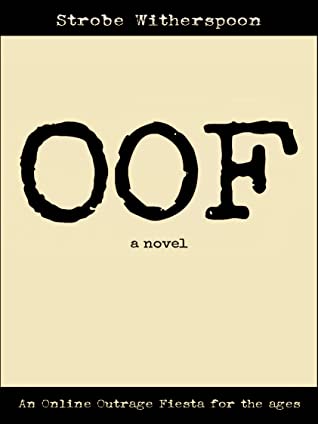
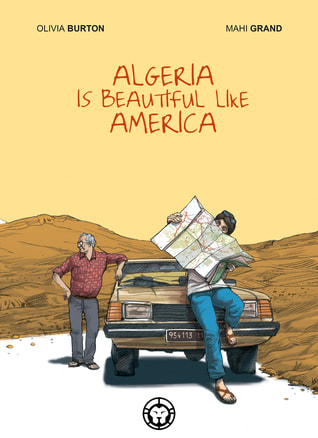
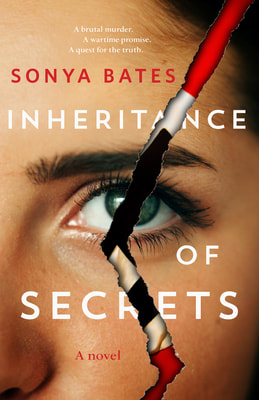
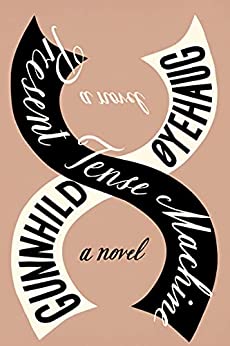
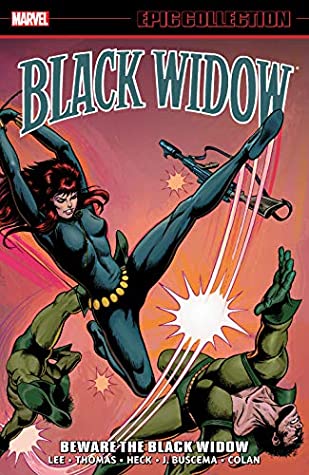
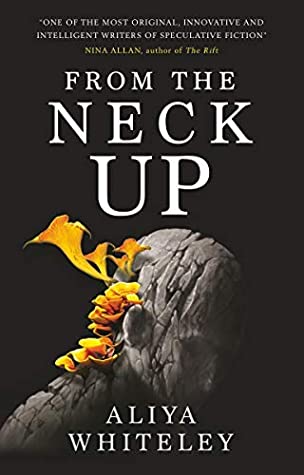
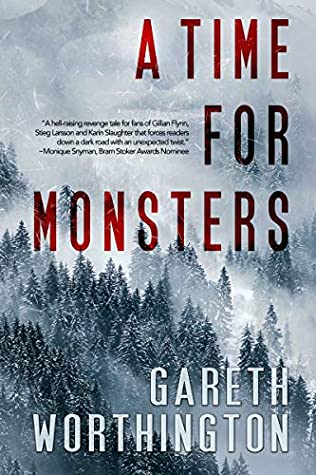
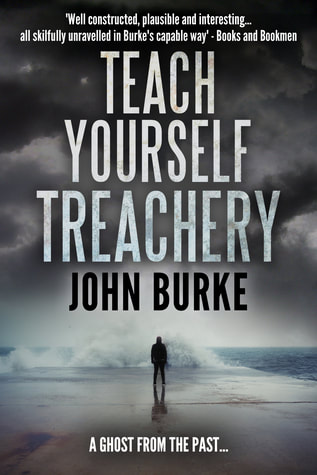
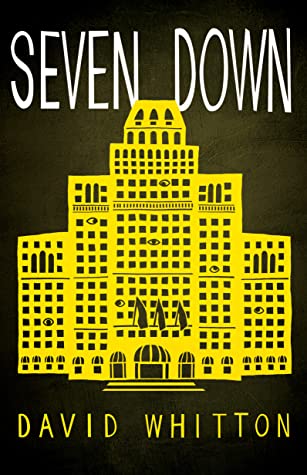
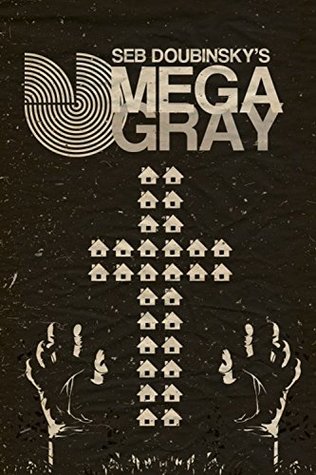
 RSS Feed
RSS Feed
